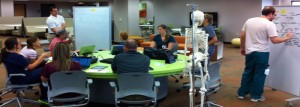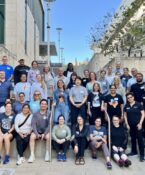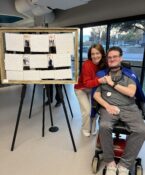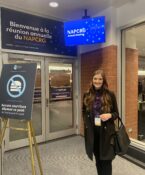Gibson D. Lewis Library a model for 21st century learning environment
Think a library is a quiet place? Think again.
At UNT Health Science Center’s Gibson D. Lewis Library, students gather around café-style booths, big screens, virtual dissection tables and semi-private nooks. They talk about projects, research online and practice their presentations.
The Lewis Library is leading a revolution to better serve today’s health care professionals in training. Gone are the old-school forests of floor-to-ceiling books, magazines and journals. In their place stand furniture and space designed to promote collaboration and creativity.
Students and professors increasingly use online material rather than printed books and journals, and they work together on shared networks. The Collaborative Learning Commons provides a habitat for all this and more.
“Students want to do group and individual study, create group presentations, eat breakfast, lunch and dinner, and socialize with their friends, all in the same space,” said Library Director Dan Burgard. “We created flexible places where students can get exactly the level of interaction that they want and can even be ‘alone in public’ if they choose.”
 |
| 3rd Floor of the the Gibson D. Lewis LIbrary before the renovations |
The library’s 2011 renovation attracts leaders in the field who tour the facility to learn how other institutions can replicate its success. The library is a model for others to follow, said Dixie Jones, MLS, President of the Medical Library Association and Director of LSU Health Shreveport‘s Health Sciences Library.
“These creative spaces truly make the Lewis Library a 21st-century facility, geared toward the needs and comfort of its users,” she said.
Working with Provost Thomas Yorio, PhD, and Vice Provost Renee Drabier, PhD, MBA, library personnel coordinated the removal of 86 percent of the library’s print material and shelving – more than 100 tons or half the weight of the Statue of Liberty. The middle floor of the library building was turned into a commons space while the top floor is now a 24/7 quiet study area. About 600 electrical outlets were added for students’ laptops and other devices, and Internet connectivity was enhanced to eliminate dead spots.
Read a book chapter by Drabier and Burgard on the library transformation.





Social media